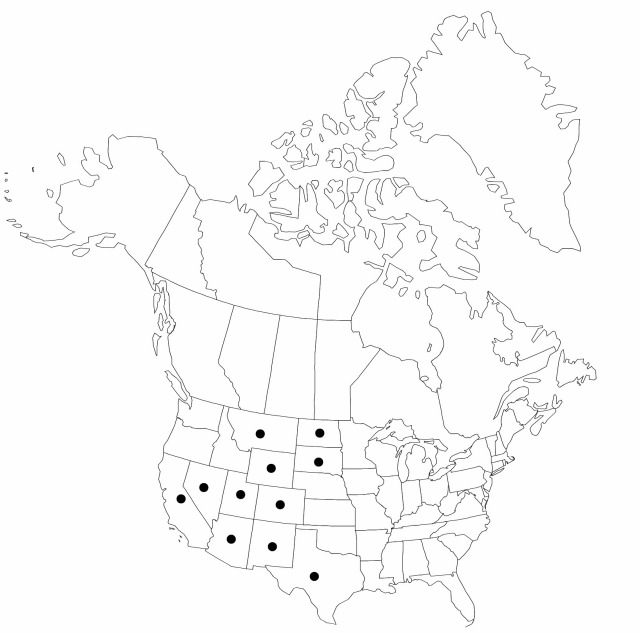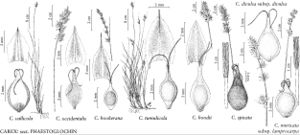Carex occidentalis
Mem. Torrey Bot. Club 1: 14. 1889.
Plants without conspicuous rhizomes. Culms 25–90 cm, 1.6–2 mm wide basally, 0.6–0.7 mm wide distally. Leaves: sheaths tight, green, fronts hyaline; ligules less than 2 mm, as long as wide; widest leaf blades 1.5–2.5(–3) mm wide. Inflorescences with 4–10 spikes, 1.5–3.5 cm × 6–10 mm; proximal internodes as long as to slightly longer than proximal spikes, rarely 2 times as long; proximal bracts to 3 cm; spikes with 3–10 ascending to spreading perigynia. Pistillate scales brown with green, 3-veined center, ovate, 3.4–4 × 1.6–2 mm, body wider than and as long as perigynium, apex acuminate to short-awned, awn less than 1 mm. Anthers 2.5 mm. Perigynia brown, sometimes with green margins, faces obscurely veined, 2.5–4.5 × 1.5–1.9 mm, base of body somewhat spongy, margins serrulate distally; beak 0.6–1.3 mm, apical teeth 0.2–0.3 mm. Stigmas straight, 0.07 mm wide. Achenes elliptic-circular, 1.9–2 × 1.5–1.6 mm.
Phenology: Fruiting spring–early summer.
Habitat: Dry grasslands, forests
Elevation: 1200–3500 m
Distribution

Ariz., Calif., Colo., Mont., Nev., N.Mex., N.Dak., S.Dak., Tex., Utah, Wyo.
Discussion
There are questionable records from central Mexico of Carex occidentalis, which is otherwise endemic to the flora area.
Selected References
None.
